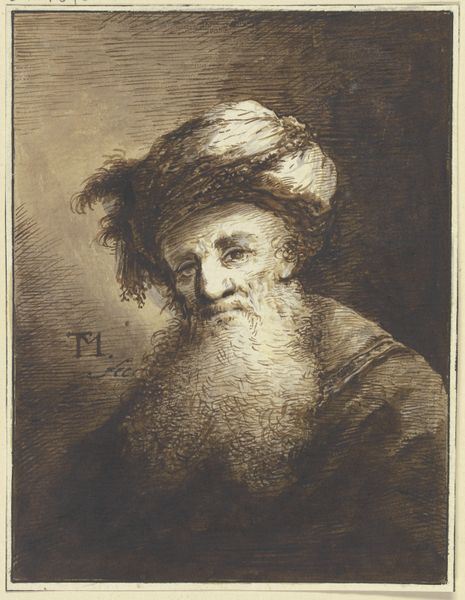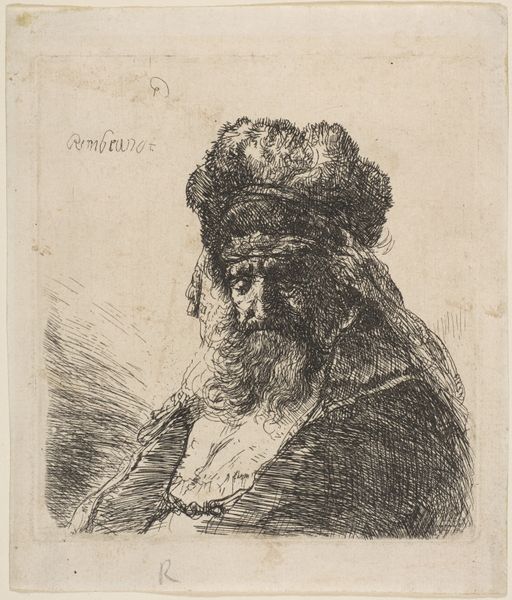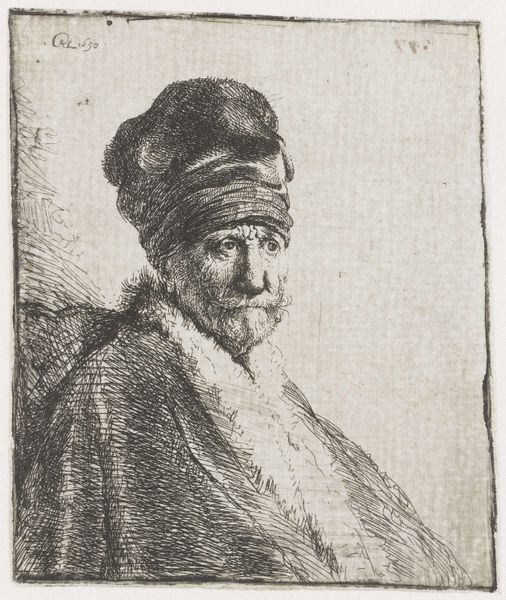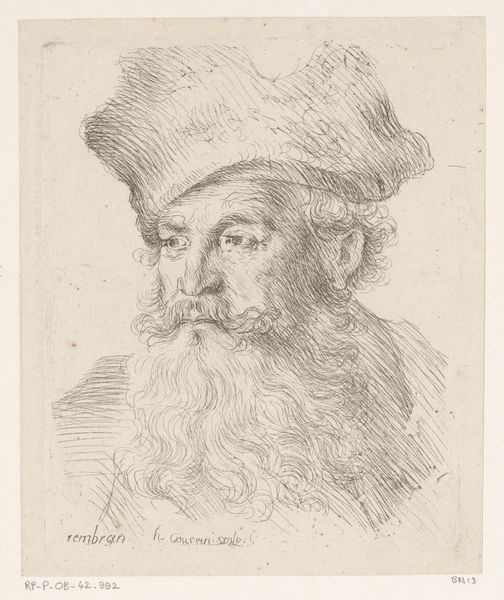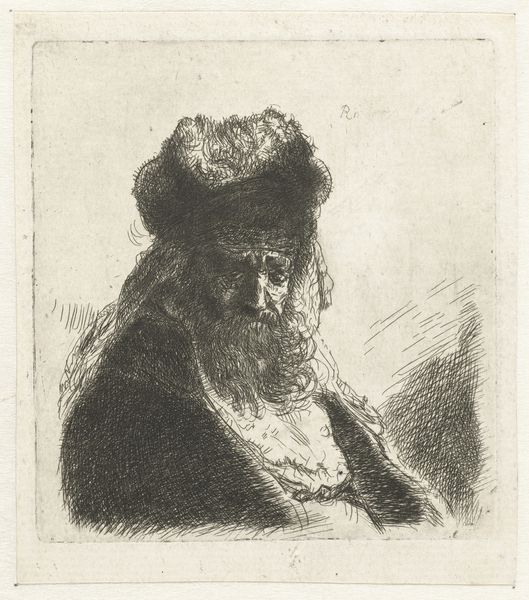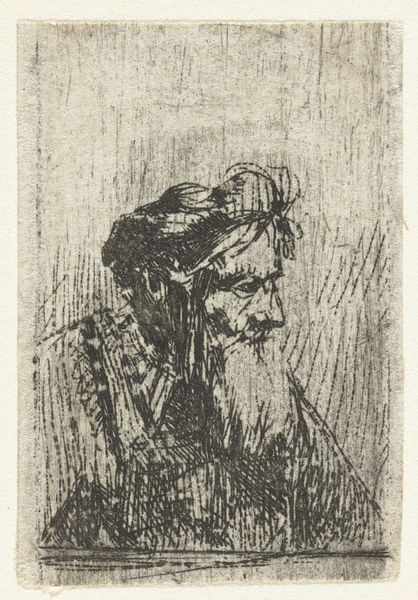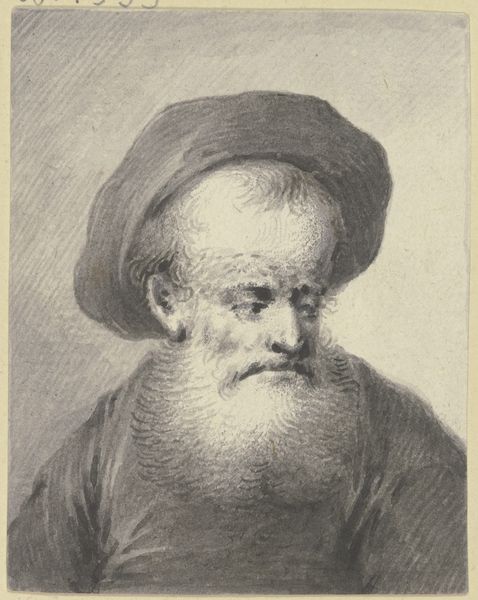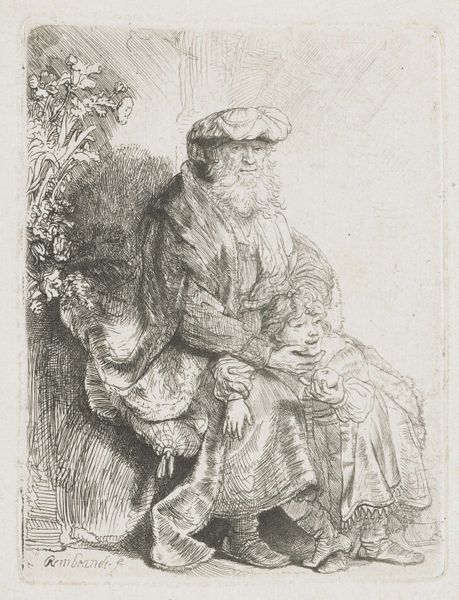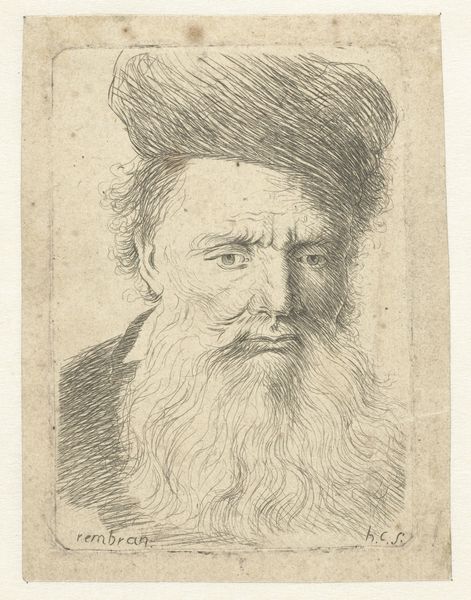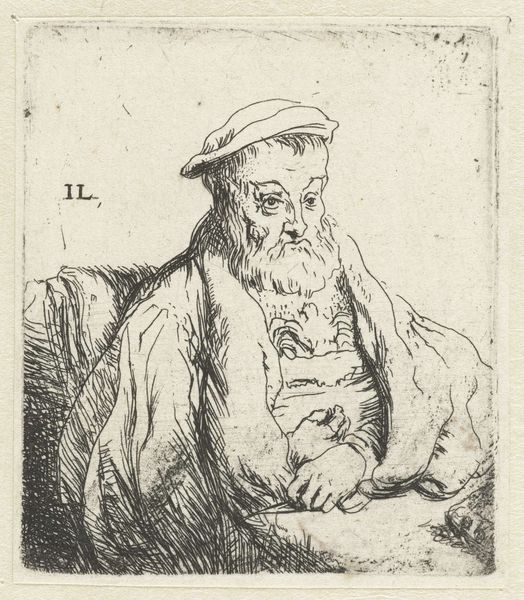
drawing, pen
#
portrait
#
drawing
#
baroque
#
pencil drawing
#
pen
#
portrait drawing
Dimensions: height 118 mm, width 93 mm
Copyright: Rijks Museum: Open Domain
Editor: Here we have "Buste van een oude man," or "Bust of an Old Man," a drawing by Johann Georg Trautmann created sometime between 1723 and 1769. The strokes of pen and pencil give this piece such amazing texture. What catches your eye? Curator: Well, I immediately look at the *how*. How did Trautmann achieve this? The visible pen strokes show the process itself. Consider the labor involved in creating such intricate detail, especially in the beard and the feathered turban. It points to the artist's skill as a form of production, right? How that skill translates into monetary value in the art market then, and now. Editor: That's interesting! I was focused on the character portrayed. But thinking about production... was this kind of detailed portraiture common at the time? Curator: Precisely! The Baroque period was fascinated with ornamentation, which affected how items like textiles or paintings were constructed. Also, consider who commissioned these works. Understanding the social context of production helps us see the power dynamics involved. What does the very *making* of such an image say about the sitter's status? Editor: I see. So, the materials and the act of creation reflect broader social structures. Curator: Exactly. This wasn’t just about representing an individual; it's about the social value embedded in the materials, the technique, and ultimately, the finished product being circulated and consumed. It challenges us to think of "high art" as connected to processes that affect all aspects of production. Editor: Thanks, I definitely see more now than I did before! It makes you realize everything we interact with is someone's labor, right? Curator: Indeed. And analyzing art through this lens reveals those often-invisible relationships.
Comments
No comments
Be the first to comment and join the conversation on the ultimate creative platform.

